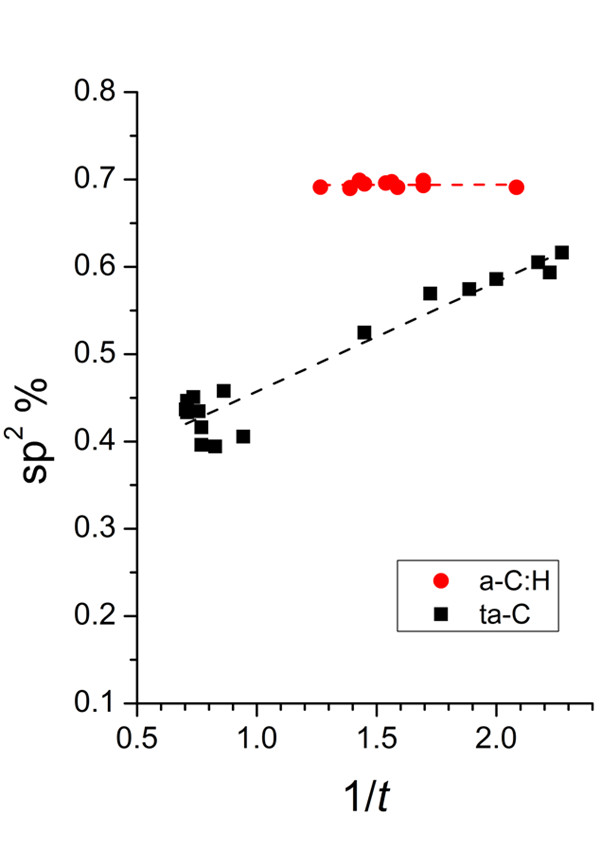IT-13-P-1929 Influence of FIB milling on the determination of sp2/sp3 ratio of carbon materials
In focused-ion-beam (FIB) preparation of TEM samples, the energetic Ga+ beam may have damaged the original structure of both sides of the cross-section specimen. Damaged cover layers of amorphous structure are expected for FIB lamellae of carbon materials with modified bonding configurations. Quantitative ELNES technique is well-established for bonding-configuration analysis of carbon. However the sensitivity of this technique is limited by the inevitable FIB-induced damage. Here we propose a simple mathematical model to correct this damage influence on the determination of sp2/sp3 ratios of carbon materials. And the model is tested for HOPG and DLC films with different fractions of sp2 bonds.
The bonding configuration throughout the sampled material column can be considered as a linear combination of those of the damaged layers on both sides and the bulk. Assuming that the damaged cover layers are of uniform thickness and ignoring the local difference in the bonding configurations in the damaged layers and the bulk material, a linear relationship can be derived between the Iπ*/Iσ* ratio for HOPG (or sp2 % for DLCs) obtained from the C-K edge spectra and 1/t, where t indicates the relative thickness obtained from corresponding low-loss spectra. Consequently, the intercept is the real Iπ*/Iσ* ratio (or sp2 %) for the bulk.
FIB preparation for HOPG and DLC samples was followed by a standard lift-out technique. 30 keV Ga+-ions were used for thinning and during the final stage a high tension of only 5 kV was applied to minimize the damage. C-K edge EELS spectra were taken at magic angle (MA) conditions. The cleaved HOPG specimen was largely kept perfect in graphite crystallinity and thus provides as a standard for the FIB-prepared HOPG.
The difference between the FIB-prepared HOPG and the standard is reduced from as high as 20 % to 4 % after the correction. Fig. 1 demonstrates the original quantitative EELS results of two DLCs as a function of 1/t. The DLC (a-C:H) with high sp2 % (69 %) shows little discrepancy with the thickness variation (see red symbols in Fig. 1) and is in accordance with the Raman study (70 %). Therefore, it could imply that the damaged a-C layer contains the same fraction (~ 70 %) of sp2-hybridized C-atoms. Seen from the black symbols in Fig. 1, the ta-C film with lower fraction of sp2 bonding shows a larger dispersion of sp2 % from 39 % to 60 % with respect to t ranging from 0.4 to 1.4, however a linear relationship is indeed found and the sp2 % is corrected to 33 ± 1.3 % by the model. Further assuming that the sp2 % of the FIB-damaged layer is ~ 70 % for all carbon specimens, the damaging depth on each side are estimated to be ~ 15 nm for the HOPG lamella and ~ 10 nm for the ta-C one.
XZ acknowledges funding from China Scholarship Council (CSC) (No. 2010606030). PG acknowledges support from Deursche Forschungsgemeinschaft DFG (project grant Gu 367/30).

Fig. 1: MA-EELS quantification of sp2 % for the a-C:H and ta-C DLCs as a function of the reciprocal of the relative thickness (1/t). Dashed lines are linear fitting results for each sample. |